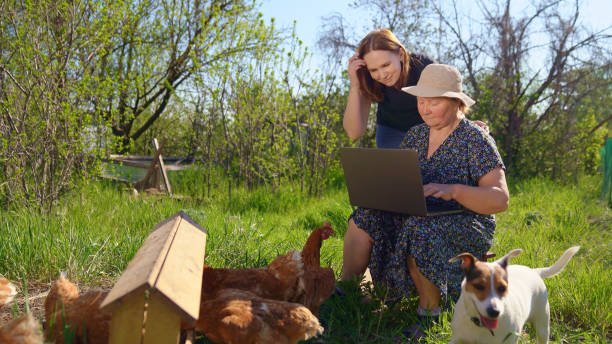The internet is an important tool that we all rely on every day. Whether you are working from home, binge-watching your favorite movie, or just scrolling social media, the internet plays an important role in our daily lives. But the way your internet gets delivered can affect how fast and reliable it is So, let’s face it, finding the best internet access is just as important as finding a mechanic to fix your car because it’s a necessary part of your life that you rely on. With that in mind, we have solutions for finding the best internet for you, wherever you live. So let’s just get started.
High-Speed Internet in Urban Areas
City living comes with many advantages, and high-speed internet access is one of them. Urban areas have a higher concentration of internet service providers (ISPs), leading to a wider variety of the best internet access availability for its residents. This leads to more competition among providers, which often means more affordable plans, faster speeds, and a wider range of data caps (or unlimited data options) to choose from.
High-speed internet options in urban areas typically include:
- Fiber Optic: Fiber has this cutting-edge technology that transmits data using light pulses, offering the fastest and most reliable internet connections available.
- Cable: Cable internet uses existing cable TV infrastructure to deliver internet access. It’s a widely available and generally affordable option with good speeds.
- DSL: Digital Subscriber Line utilizes existing telephone lines to deliver internet access. Speeds are typically slower than cable or fiber, but DSL can be a good choice in areas where other options are unavailable.
However, even within a larger city, internet access variation can exist. Low-income people might have limited access to high-speed internet options due to infrastructure limitations or affordability issues. Thankfully, government initiatives and community programs are working to bridge this gap and ensure broader broadband expansion in urban areas.
| 💡 Pro Tip: Bundle and Save! Combine internet with phone and cable from the same provider for a cheaper monthly bill. |
High-Speed Internet in Rural Areas
For those living in rural areas, finding the best internet can be a different story. Lightly populated regions often lack the infrastructure needed to support high-speed internet options like fiber optic or cable. This can lead to limited choices, slower speeds, and potentially higher costs for internet connectivity solutions.
However, advancements in technology and innovative solutions are helping to bridge the digital divide in rural areas. Here are some of the emerging internet connectivity solutions for those in rural locations:
- Satellite Internet: Satellite internet provides internet access almost anywhere on the globe by bouncing signals between satellites in space and a dish installed at your home. While offering widespread availability, satellite internet can suffer from latency issues, making it less than ideal for real-time applications like video conferencing.
- Fixed Wireless Internet: This option utilizes towers to transmit internet signals to a receiver antenna on your property. Fixed wireless internet offers a good balance between speed and affordability in areas where cable or fiber optic infrastructure is limited.
- Mobile Broadband: Utilizing 4G LTE or 5G networks, mobile broadband can provide internet access in rural areas. However, data caps and potential throttling can be limitations.
| Call 866-861-4084 for Internet Deals |
Choosing the Best Internet
Whether you live in a city or rural area, the key to finding the best internet solution lies in understanding your needs and comparing available options. Here are some factors that you need to consider:
- Speed: Do you need lightning-fast speeds for online gaming or video editing, or is basic browsing and email sufficient?
- Data Usage: How much data do you typically use per month? Plans with data caps might not be ideal for heavy internet users.
- Budget: Compare plan costs and consider any additional fees associated with equipment rental or installation.
- Availability: Check with local ISPs to see what internet connectivity solutions are available in your area.
- Customer Service: Research the customer service reputation of different ISPs to ensure you get the support you need if issues arise.
A Comparison Chart
Here is a quick comparison chart to help you decipher the strengths and weaknesses of different internet options:
| Feature | Fiber Optic | Cable | DSL | Satellite Internet | Fixed Wireless |
Mobile Broadband |
| Speed | Fastest | Very Good | Moderate | Moderate (with latency) | Good | Varies based on location |
|
Reliability |
Most Reliable | Reliable | Reliable | Moderate | Good | Varies based on location |
| Data Caps | Often Unlimited | May have data caps | May have data caps | May have data caps | May have data caps | Data caps are common |
| Ideal Uses | Streaming, Gaming, Work | Streaming, Browsing | Basic Browsing, Email | Remote Locations | Streaming, Browsing | Light Browsing |
Tools and Resources for Finding the Best Internet
Navigating the world of internet service providers and plans can feel overwhelming. Thankfully, there are helpful tools and resources available to streamline your search for the internet option:
- Broadband Availability Maps: Many government agencies and nonprofit organizations offer online maps displaying internet service availability by location. These tools allow you to see which providers and internet connectivity solutions are available in your area.
- ISP Comparison Websites: Several websites compare internet service providers based on factors like speed, data caps, pricing, and customer reviews. These resources can help you narrow down your options and identify providers offering the best value for your needs.
- Promotional Offers and Bundles: ISPs often offer promotional deals and bundles that can save you money. Be sure to compare plans and consider bundling your internet service with cable TV or phone service for potential discounts.
- Negotiating with Your Provider: Don’t hesitate to negotiate with your chosen ISP. Existing customers often have leverage, and you might be able to secure a better deal on your current plan or negotiate a lower rate when switching to a new plan.
Initiatives for Broadband Expansion
The internet is like water– we all need it to live our daily lives. But the sad part is that not everyone can get fast and reliable internet. This is a big problem which is called the “digital divide.” Many people are trying to fix this problem.
Broadband expansion in rural areas: In rural areas, where houses are spread out and towns are small, setting up internet infrastructure can be expensive. To bridge this gap, the government is sometimes stepping in with financial help. They might give money to local internet providers to build fiber optic networks, which are super-fast and reliable. There is also a new technology called “fixed wireless” that uses towers to send internet signals, which is a great option for remote locations.
Broadband expansion in urban areas: In big cities, the problem can be a little different. Sometimes, there aren’t enough choices for internet providers, which can lead to higher prices. To fix this, some cities are taking matters into their own hands by building their own internet infrastructure. This creates more competition, which usually means lower prices for everyone. Moreover, there are also programs to help low-income families afford internet access at home.
Conclusion
Well, that’s all. This guide will surely help you pick the perfect internet for your home, no matter where you live! This guide showed you the different internet options, like fiber optic for super-speed and satellite for reaching almost anywhere. Now you know what questions to ask to find the perfect internet fit for you, whether you live in a city or the countryside. So go forth and explore the web with confidence!
FAQs
What is the best type of internet for rural areas?
Satellite and fixed wireless internet are often the best options for rural areas due to their wide coverage and improved speeds.
What is the difference between high-speed internet and regular internet?
High-speed internet refers to connections offering significantly faster download and upload speeds compared to traditional dial-up or slow DSL options. These speeds allow for smoother streaming, faster downloads, and improved responsiveness for online activities.
How can I improve my internet speed in a rural area?
Using a signal booster, switching providers, and optimizing your router settings can help improve internet speed in rural areas.
What should I consider when choosing an internet provider?
Consider factors like speed, cost, reliability, and customer service when choosing an internet provider.
Are there government programs to help with internet access in rural areas?
Yes, programs like the Rural Digital Opportunity Fund and the Connect America Fund are designed to improve internet access in rural areas.
Is there anything I can do to improve my internet connection, even if I don’t have the best options available?
Yes! Simple steps like restarting your router or resetting it to factory settings can sometimes improve performance. This guide also explores additional tips for optimizing your internet connection in rural areas.

Meet Jennifer Harper, a wordsmith extraordinaire who has been shaping the digital landscape with her creative prowess for the past two years. Not just a content writer; she is a storyteller who brings the content to life. Her passion for internet trends, memes, and the ever-evolving world of entertainment is evident in every piece she creates. Jennifer doesn’t just follow trends; she sets them.
